On Friday, August 19th, I said goodbye to the Hawaiian Islands and hello to the California coast as I crossed back over to the mainland. I landed in LAX and caught a shuttle to Ventura Harbor where Park Headquarters is located for Channel Islands National Park. There, I was greeted by Marine Ecologist Joshua Sprague who led me to the park’s 58-foot research vessel, the Sea Ranger II, where I would be spending the weekend before joining the Kelp Forest Monitoring (KFM) team for a 5-day monitoring trip.
On Monday, after a day exploring the harbor and beach for myself, I awoke to the hustle and bustle of the crew arriving bright and early to prep the boat for the week ahead. Josh introduced me to Marine Biologist and Regional Dive Officer Dave Kushner, Captain Keith Duran, and Biological Technicians Katie Grady, Parker House, Keenan Chan, and Christy Santschi. As it turned out, I wasn’t the only visitor for the week. Ian Jacobson, the Dive Program Coordinator for local nonprofit LA Waterkeeper would be joining me in helping out the KFM team. After loading dive gear, survey equipment, and enough food to feed an army onto the boat, we were off to the Channel Islands for an intensive week of diving and field surveys in the kelp forests of Southern California.
The park itself consists of five of the eight Channel Islands – Anacapa, Santa Barbara, Santa Rosa, San Miguel, and Santa Cruz – and the water extending one mile offshore. Located at the confluence of cold northern waters being carried south by the California current and the warm waters coming up along the coast from the south, the Channel Islands boasts an exceptionally diverse marine ecosystem. In addition to bringing together both warm- and cold-water species and yielding a high biodiversity, the currents also produce a nearly continuous upwelling phenomenon, which brings nutrient-rich water up from the deep ocean, supporting a highly productive environment. Because of this, the park boasts some of the most pristine examples of kelp forests in California. In fact, when Channel Islands National Park was created in 1980, Congress specifically noted this and highlighted the park’s scientific value as a site for long-term monitoring.
Launched in 1981, the KFM Program is the longest established marine monitoring program in the National Park Service. Now in its 35th year, the KFM Program has grown from monitoring 13 permanent sites selected at the time of its formation to the now 33 sites located throughout the park. In 2005, the program doubled when 16 sites were added to better monitor the newly established Marine Reserves and to assess the efficacy of these reserves over time. Every year, each site is surveyed following the same detailed protocol and data are collected on over 70 species of algae, invertebrates, and fish. This long-term, multi-decade dataset has helped scientists understand the large-scale ecological patterns and processes at work in kelp forest communities that a five-year study would fail to detect. In addition, the data has allowed scientists to predict the larger trends in population dynamics of individual species and has informed various resource management strategies adopted by the state of California (including the establishment of marine reserves in 2002 and the closure of the abalone fisheries in 1997). Maintaining such an important and comprehensive dataset means that every summer, from May until October, the KFM team heads out on these 5-day monitoring trips every other week in order to complete surveys on all 33 sites.

KFM Site Map. Channel Islands National Park.
On the way out to our first site, Josh explained the game plan of a typical day at a monitoring site. With a total of 12 different sampling techniques to perform and a massive amount of data to collect, each site typically requires 3 or 4 hour-long dives. Per person! And with a total of eight divers on board, there were a lot of moving parts to keep track of, especially with two of us being new to the program and the protocols. However, having done this countless times before, the KFM team ran like a well-oiled machine. When we pulled up to Anacapa Island at Site #13, Landing Cove, as soon as the anchor dropped, a team of divers entered the water. Their job was to lay the 100-meter baseline transect and take a video of the site. Once that was done, it was time for everyone else to hop in.

A view of the kelp forest from the surface.
Not only was I new to the program and the protocols, but this was also my first dive ever in the California environment, let alone a thriving kelp forest biome. So all of the organisms were new to me. As such, I was paired with Dave Kushner for the day and told to just take in the ecosystem and observe the site while being his dive buddy.
When I first splashed into the water, I was immediately taken aback. I was not quite sure what I was expecting, but it was nothing in comparison to what I saw. I was surrounded by Giant Kelp (Macrocystis pyrifera), some easily over 40-feet in height. It was a bit overwhelming at first, but when I paused for a second, I noticed the calming rhythym of the fronds swaying majestically in the surge. Taking a deep breath, I followed Dave into the dense maze of kelp, trying not to get entangled. As we swam along, strange fish I had never seen before darted in between the kelp blades. In the distance, a bat ray (Myliobatis californica) glided by in the canopy and a sea lion swam just yards away, checking us out. Compared to the showy color scheme of a Caribbean coral reef, the Californian kelp forest had a much cooler color palette, filled with earthy tones and muted hues. That is, except for the Garibaldi damselfish (Hypsypops rubicundus), whose burnt orange added an occassional splotch of color to the landscape.

At times the kelp forest can get so dense that you can’t see more than a body length ahead of you. In these cases, you also need to be extra cautious about entanglement.
When we made it to the start of the baseline transect, Dave and I began working on 1-meter quadrat surveys. With a goal of determining abundance of certain sedentary indicator species, this sampling technique was primarily focused on algae and invertebrates. At regular intervals along the transect, I would set up two 1-by-1 meter quadrats, one on either side of the tape, and Dave would search for snails, sea stars, and other organisms within the boundaries and record the abundance. On our next two dives, Dave and I took band transects perpendicular to the baseline. Though conceptually similar to the quadrat surveys, this sampling technique was designed to determine the abundance of less common or clumped organisms, like endangered abalone species or rock scallops, and therefore encompassed a much greater search area. While Dave swam the 60-square meter sections collecting the data, he would point out different organisms so that I could begin to develop a search image of my own. Additionally, as he was doing the surveys, I took pictures of various fish, algae, and invertebrates so that I could look them up later and identify them for practice.
- Giant Keyhole Limpet (Megathura crenulata)
- Bat Star (Patiria miniata)
- Giant-spined Sea Star (Pisaster giganteus)
- California brown sea hare (Aplysia californica)
- Island kelpfish (Alloclinus holderi)
- Red sea urchin (Strongylocentrotus franciscanus)
- Chestnut Cowrie (Cypraea spadicea)
- Red Rock Shrimp (Lysmata californica)
As we continued our way down the baseline doing more band transects, we crossed paths with other members of the team who were busy at work. Some of them were collecting size measurements on hundreds of urchins, while others were counting the number of stipes (think stems) of individuals of Giant Kelp. Nearby, Katie, attached to a surface supply of air, could be heard calling off data points into her full-face communication system for Keenan to record topside. With four dive pairs operating at once, the site was alive with a suite of scientific activity! Finally, after racking up over 26 hours (yes, you read that right – 26 hours!) of bottom time and rigorous data collection, we had completed the first site of the trip.

Hanging at 15 feet, the KFM has an oxygen bar you can breathe on for your safety stop. Definitely a treat after a long dive!

Coming up from the last dive of the day. Together, we had over 26 hours of bottom time on Day 1 alone!
Throughout the rest of the week, we went to different spots off of Santa Cruz Island and repeated the day-long process of surveying a site. Our second site, Pedro Reef, was a stark contrast from where we were diving the day prior. Instead of diving on a beautifully lush kelp forest, we descended on an empty and exposed urchin barren. Located outside of the Marine Reserve, Pedro Reef serves as a prime example of how overfishing can have devastating cascading impacts on a kelp forest. Fishing pressures on predators like the California sheepshead and other apex consumers, allow sea urchin populations to boom unchecked. From there, elevated urchin populations graze on and mow down entire sections of kelp forests. To add insult to injury, the site saw a dramatic change from the previous year’s already dismal barren state. An invasive brown alga Sargassum horneri had taken over and covered practically every inch of available substrate.
At Pedro Reef, I was paired up with Katie and got to switch it up and implement different sampling techniques. For our first dive, I got to practice identifying the various species of fish I had studied the previous night by doing a Roving Diver Fish Count with Katie. Together we dropped down, each with our own dive slates and began swimming in a lane that spanned out 10 meters on either side from the baseline transect, counting every fish we saw. For someone who just learned about the fish of the southern California waters, I have to say that I was proud of my ability to at least identify all of the indicator species, even if I did have to write down descriptions of a few fish because I didn’t remember their names. On our second dive, Katie and I were designated to do the 5-meter quadrats. This protocol called for combing 1-by-5 meter segments on either side of the baseline and quantifying the amount of adult and juvenile Giant Kelp and Sargassum. As this site was overgrown with Sargassum, we spent well over an hour raking through the macroalgal carpet counting the individuals and determining their reproductive maturity. While tedious, this data will be very important for understanding long-term patterns and processes associated with urchin barrens and the cascading effects of overfishing. Plus, as a bonus, looking at the substrate so closely during the surveys revealed some colorful surprises!
- Chromodoris macfarlandi
- Navanax inermis (California aglaja)
- Diaulula sandiegensis
- Mexichromis porterae
- Limacia cockerelli
On Wednesday, we changed it up and did something a bit different. We went to the backside of Santa Cruz Island, to Yellowbanks, a site that had already been surveyed earlier in the summer. Instead of doing the normal routine, we went to check on the Artificial Recruitment Modules (ARMs). Basically just stacks of cinderblocks inside wire cages, ARMs are an important part of the KFM program. All of the other sampling techniques the program utilizes are non-intrusive, meaning divers do not turn over rocks or reach inside crevices to look for organisms. However, since many young recruits and juveniles often take shelter in those protected spaces, a large and crucial demographic of creatures are overlooked in these surveys. By deploying the artificial 3-dimensional structures and thus providing shelter for juvenile organisms, the KFM team has created an artificial habitat for a comprehensive intrusive survey.
On the first dive, each person picked an ARM and disassembled it, carefully removing each cinderblock and placing all of the indicator species found on, in, or under it into a giant mesh collection bag. After an ARM was completely disassembled, the goodie bags of sea creatures were brought back to the boat where their contents would be measured. On deck, everyone gathered around the bucket of creatures with a set of calibers and called out mesurements of urchins, sea stars, cowries, and snails to a data collector. The organisms were then returned and the ARMs reassembled.

The KFM program uses Artificial Recruitment Modules (ARMs) to conduct systematic intrusive surveys. With my collection bag in tow, I begin to disassemble an ARM and examine the contents.

A diver measures a Crowned sea urchin (Centrostephanus coronatus) with a pair of calipers. These urchins are quite fragile and are measured on the dive to avoid harming the urchin.

A pile of purple sea urchins (Strongylocentrotus purpuratus) that have already been measured make up just a portion of the contents of a typical ARM.
Following our long days, whether they were spent diving for 3-4 hours or sitting hunched over a bucket of urchins, we would motor over to Santa Cruz Island, where we dropped anchor in Prisoner’s Bay for the night. Every evening, a different person on the KFM team cooked dinner for the group as the rest of us sat down and talked about the day. There was always a little bit of data processing and discussion to be done before work was officially over and dinner was served. Life aboard the Sea Ranger II was similar to that of the MV Fort Jeff out at Dry Tortugas National Park. While most people might find the cramped spaces or the lack of certain amenities like cell phone service or internet hard to handle, I had really come to enjoy life aboard a dive boat. Something about the daily schedule of dive, eat, sleep, repeat really clicks with me!
On Thursday evening, after spending the day surveying Scorpion Anchorage off of Santa Cruz Island, we had a visit from a surprise guest. The infamous Pike Spector, last year’s OWUSS NPS Intern, just happened to be spending his last week before heading back to grad school on Santa Cruz Island and came out to say hi to the KFM team. It was awesome to get to meet Pike and chat about his experience last year and the cool things he is doing now after his internship.
Thursday, August 25th, also marked the official date of the NPS Centennial. I could not think of a better to celebrate the Centennial than by spending the day diving in the kelp forests of Channel Islands National Park, all while taking part in the longest established monitoring program in the National Park Service! So while parks around the country were celebrating the Centennial with big parties and special events, we celebrated the best we could…by baking cookies!
Friday came all too quickly. Unfortunately, I had to sit out of the last day of diving because I was flying out of LA the following morning. That afternoon, we made our way back to Ventura Harbor and unpacked the boat from long week in the field. After saying goodbye to the KFM crew, I stayed overnight on the boat before catching an early morning shuttle to begin my weekend of travel to my next destination: Kalaupapa!

The KFM crew: (left to right) Parker, Christy, Katie, Keenan, Ian, Josh Sprague, me, Dave Kushner, Captain Keith
I had an absolute blast diving with the KFM crew and living on board the Sea Ranger II! I really have to commend the crew for the commitment they show for their work. I have to admit that that one week exhausted me. And to think they do it dozens of times in a summer season! I also want to extend the sincerest of thanks to the entire crew for welcoming me into your family for the week and for incorporating me into such an important monitoring program! Another huge thanks goes out to Parker and Josh, who let me borrow their cameras when I flooded mine. (Without them, this would have been a pretty borring blog.) I had such a fantastic time! I’ll definitely be back!













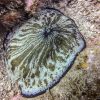
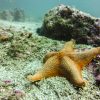
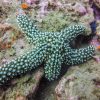
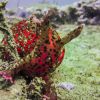

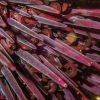
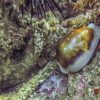
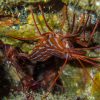



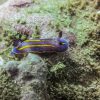
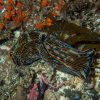
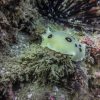
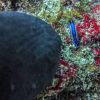
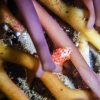






Great report on a fabulous dive adventure/historic piece of scientific research. I don’t know how you found out about this opportunity with the NPS but it certainly does seem to suit you and you’re doing a great job sharing that experience with others. Thank you.